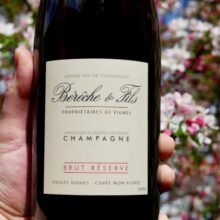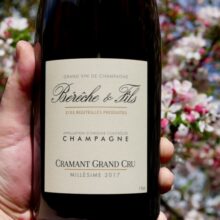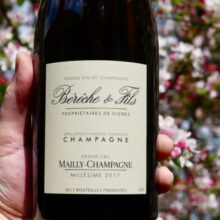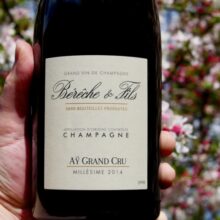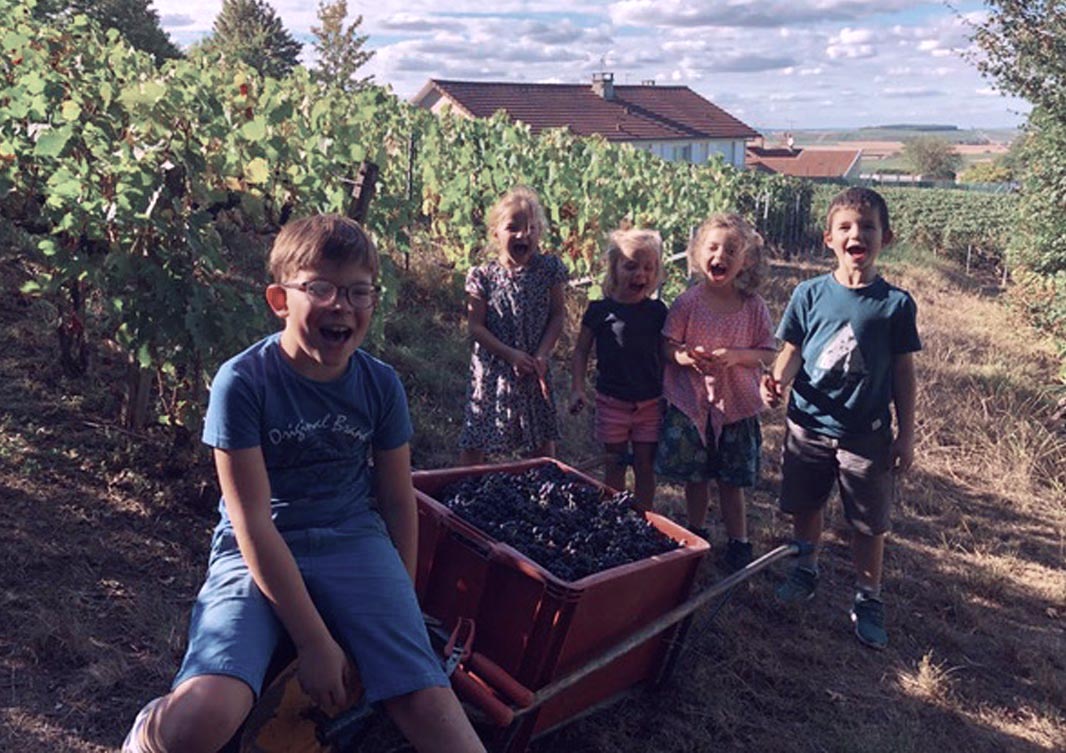
Winery
Bérêche et Fils
About Bérêche & Fils
Inspired by growers like Pascal Agrapart, the siblings immediately began ringing the changes in the search for higher quality. Although there is no official delineation in the brothers’ day-to-day work, you will most likely find Vincent Bérêche in the vines. The quality starts with thoughtful viticulture and low yields, and they benefit from a high percentage of old vines—many planted in the 1960s and ’70s.
In the Vineyard
For us wine growing is a complex system that must be understood in order to respect it.
Every action has been adequately thought out. Of course our land is plowed and we also use weed control to limit disease. This vegetation cover avoids herbicides, insecticides and anti-rots.
Everything begins with the soil. The fertilization is organic. We feed wildlife which in turn feeds flora and thus the soil is working.
Our team of winemakers always prune and maintain the vineyards with high sensitivity. They respect the personality of each vine.
All our interventions during the growing season are based on disease tolerance. No treatment is systematic. We adjust dosage to the vine with the best agricultural technologies. Moreover effluents is never released and each waste is reprocessed.
As a result the House Bérêche has one of the lowest treatment frequency index in the Champagne region. It is also among the first to be certified High Environmental Quality (level 3).
Vincent BERECHE
The core of its 14.8 hectares fall in the 1er Cru village of Ludes, a pretty town with excellent soils sheltered by the dense woods of the Montagne. Ludes is sandwiched between Rilly-la-Montagne and Chigny-les-Roses to the west and the Grand Cru of Mailly-Champagne to the east. Bérêche owns small sites in all three of these villages, as well as a parcel of old vines in Trépail. Still in the Montagne, there’s a soupçon of Ambonnay, while in Vallée de la Marne, they work in Aÿ and Mareuil-le-Port, which specialises in Meunier. Together, they farm 20 parcels, and their holdings are complemented by almost academic volumes of fruit purchased from Cramant and Avize in the Côte des Blancs.
Upon their arrival, the brothers were among the first in the Montagne to abandon chemical herbicides, returning instead to the labour-intensive manual cultivation of their vines.
Vincent is aided by a team of 11 full-time employees—allowing for around one hectare per person. This is a figure you might expect from a very top Burgundy domaine. By any measure, the work is fastidious and includes restricting yields and ploughing between the rows and the vines. Organic and biodynamic farming methods encourage soil and vine health, and this remains one of few estates in Champagne that perpetuates the work of mass selection from its old vines.
In the Winery
Where Vincent is the quiet one, Raphaël Bérêche is the ‘face’ of the domaine. Not only a marvellous winemaker unafraid to experiment and take risks, he is also sharp as a tack and one of grower Champagne’s most charismatic and outspoken evangelists. “Raphaël Bérêche is young, but his sheer enthusiasm and conviction will likely take him far,” was Antonio Galloni’s astute observation back in 2012. Terres et Vins, the tasting group he founded with Aurélien Laherte, is one of the hottest tickets in town—as well it might be, counting the likes of Agrapart and Chartogne-Taillet among its members. Importantly, this group was the first, and remains one of the few, to show their vin clairs (the still base wines before bubbles enter the story) to the trade each year. This kind of transparency is still almost unheard of in Champagne.
The functional cellar reflects a minimalist aesthetic focused on traditional winemaking. Bérêche employs long, natural fermentations, and critically, due to the low pH and high acidity of the grapes, the wines naturally don’t go through malolactic conversion. Each parcel is vinified separately, which makes it possible to taste the various parcels from barrel or tank just after the harvest, just like in Burgundy. Three-quarters of the production spends time in used 350-litre barrels, while the reserve wines are held in 600-litre demi-muids. Bottling occurs without filtration. Bérêche is also noted for its extended lees aging under cork, necessitating at least three years in the cellar, where 24 months can be sufficient under crown seal.
NOTE: The following is a little empirical and perhaps not as simple as conveyed. As with all things wine it is what’s in the glass that counts and that is certainly not in doubt.
The back label of each bottle of Bérêche contains the phrase, ‘prise de mousse sous liège’. This old method of aging each wine under cork instead of a crown seal largely died out with the arrival of new technology in the 1950s. Aging under cork is far more time-consuming and considerably more expensive—and also requires the highest-grade ‘Fleur’ cork—yet has become a key component of the quality and style of this grower’s wines.
Aging under cork “gives more complex, less linear wines”, says Raphaël Bérêche, “The texture of the mousse is creamier, and the wine has more breadth. We have been working this way for 30 years, and the cork has a real impact. Blind tasting, it always comes out the best.” Having carried out his own experiments since the early 1990s, Pascal Agrapart works in the same way. He believes this method allows slightly more oxygen to get to the wine during the second fermentation, resulting in Champagnes with finer bubbles and seamless texture. “It’s a bit like the difference between vinification in stainless steel or barrels.”
Where in the World is Bérêche & Fils?
Bérêche & Fils own vineyards in:
Montagne de Reims
Ormes – Sandy draining soil, deep chalk
Ludes Premier Cru – Cold mountain soil, outcropping chalk
Trépail Premier Cru – Very chalky solar soil
Mailly Grand Cru – Rich and deep soil, beautiful clays
Rilly-la-Montagne Premier Cru – Limestone and rocky soil
Ambonnay Grand Cru
Vallée de la Marne
Aÿ Grand Cru «La Côte Linguard» – Chalky and sunny land
Mareuil-le-Port – Marly soil, cold with a large presence of sediments
Côte des Blancs
Cramant Grand Cru
Purchased Grape
“Our purchasing grapes from vineyard of green viticulture, allowing us to develop particular vintages and interpret these major terroir in the history of champagne.”
